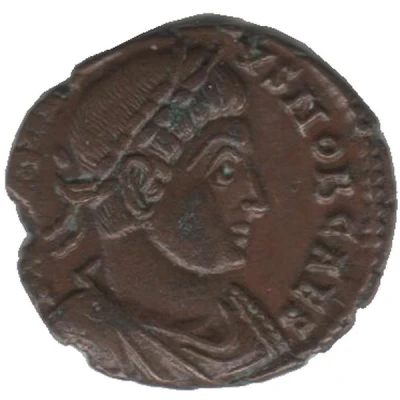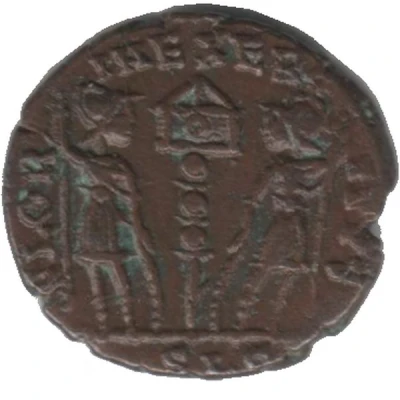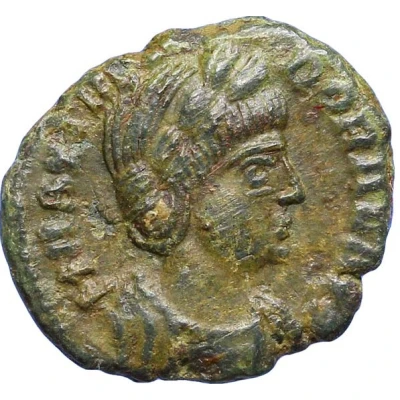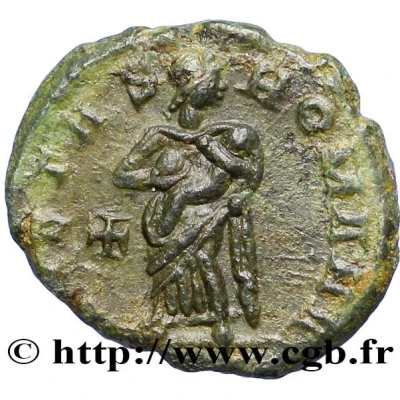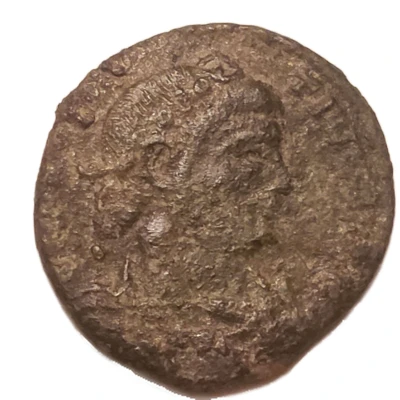
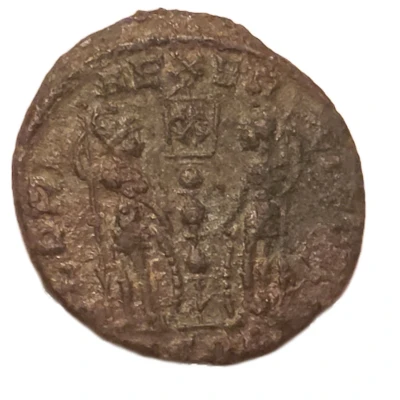

© RiderPL05 (CC0)
Nummus - Constantinus II GLORIA EXERCITVS; One standard; Lugdunum
337 year| Bronze | 1.34 g | 15 mm |
| Issuer | Rome › Roman Empire (27 BC - 395 AD) |
|---|---|
| Emperor | Constantine II (337-340) |
| Type | Standard circulation coin |
| Year | 337 |
| Value | Nummus (1⁄7200) |
| Currency | Solidus, Reform of Constantine (AD 310/324 – 395) |
| Composition | Bronze |
| Weight | 1.34 g |
| Diameter | 15 mm |
| Shape | Round (irregular) |
| Technique | Hammered |
| Orientation | Coin alignment ↑↓ |
| Demonetized | Yes |
| Updated | 2024-10-04 |
| Numista | N#132607 |
|---|---|
| Rarity index | 94% |
Reverse
Two helmeted soldiers, standing, facing each other, each holding an inverted haste with the outer hand and leaning on a shield with the inner hand; between them, a military sign on which is inscribed an "o".
Legend beginning at 7 o'clock with caesura after the 4th and 11th characters.
In exergue, a palm followed by the different workshop and the dispensary.
Script: Latin
Lettering:
GLORIA EXERCITVS
⸙ PLG
Interesting fact
The Nummus - Constantinus II coin was part of a large-scale currency reform implemented by Emperor Constantine II in the early 4th century AD. The reform aimed to address inflation and restore confidence in the Roman Empire's currency. The Nummus coin was introduced as a new denomination, and it featured a standardized design and weight, making it easier to use and exchange across the empire. This coin, in particular, was minted in Lugdunum (modern-day Lyon, France) and bears the inscription "GLORIA EXERCITVS" (Glory of the Army) on one side and the image of a Roman soldier on the other. Despite its small size and relatively low value, the Nummus coin played an important role in facilitating trade and commerce within the Roman Empire.
